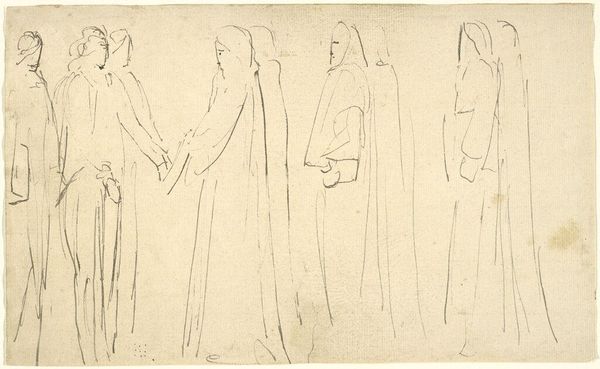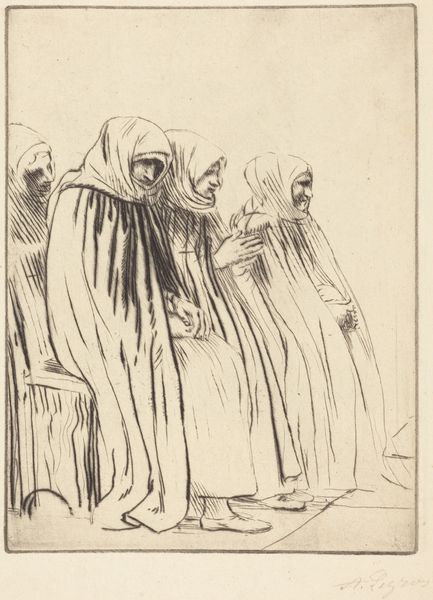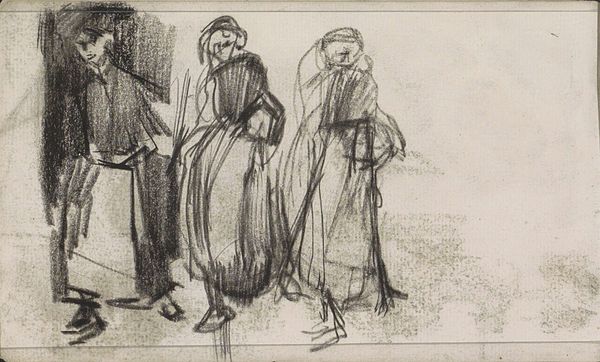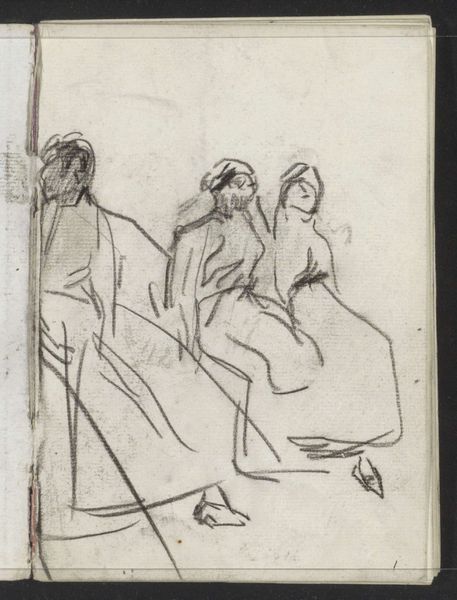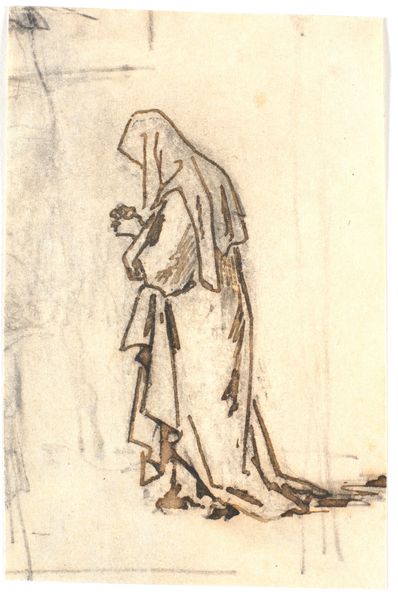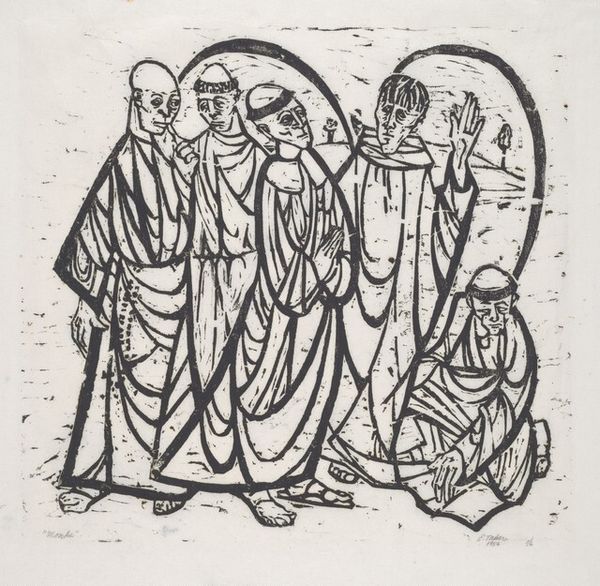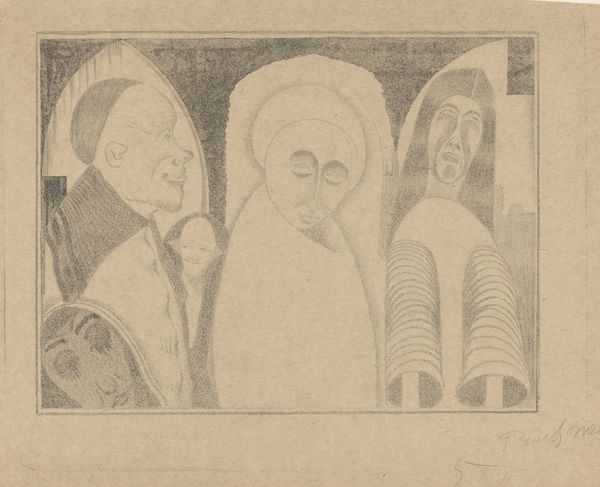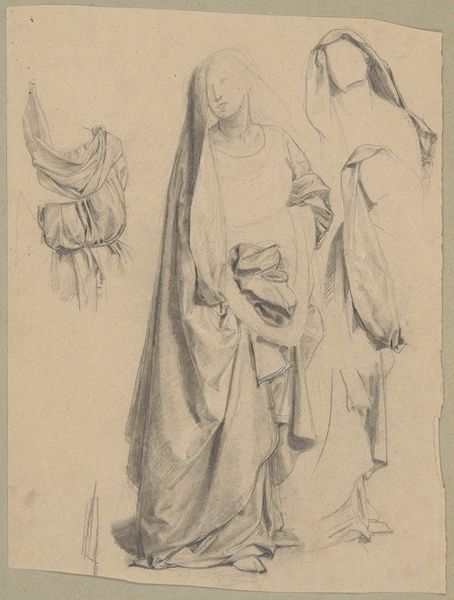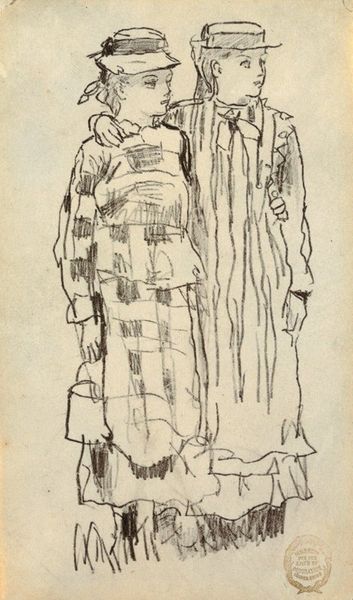
drawing, ink, pen
#
portrait
#
drawing
#
dutch-golden-age
#
figuration
#
ink
#
pen-ink sketch
#
pen
Copyright: Public Domain: Artvee
Curator: Here we have Rembrandt van Rijn's "Study Sheet with Three Women and a Boy," created circa 1638-1639. It's an ink drawing, a seemingly simple piece yet pregnant with meaning. Editor: It's so immediate, so raw! The ink strokes capture something profound—a quietness, almost a weariness, especially in the posture of the draped figures. It looks like a document of the invisible, the everyday gestures usually overlooked. Curator: Indeed. Considering Rembrandt's broader artistic and social context, it becomes even more interesting. Look at the figures. Their clothes, while sketch-like, tell of a particular social status, perhaps religious order, maybe even models used to convey feelings that the establishment didn't like. Editor: Their clothing strikes me, too. It’s so stylized. I wonder about the historical context. The head coverings evoke ideas of piety, the roles of women…it definitely speaks to prescribed gender roles of the time. The way they use to dress in middle east, even religious differences within them can be seen through garments, can you appreciate the symbolic connections? Curator: Absolutely. Gender and faith are at the very center. Their very stances embody a spectrum of emotions linked to those identities: contemplation, resignation, maybe even defiance. These themes have never left us, aren’t just trapped on time! It shows its lasting legacy through history! Editor: And look at the medium. The pen-and-ink lends itself so well to emotional intensity, allowing a glimpse into intimate space. Do you think there may be influence from the Catholic movement, perhaps it had an affect into his paintings as well? I keep going back to how the lines have evolved through our common human experience… Curator: You are not wrong, even today, the conversation and challenges of society keep happening and coming again from generation to generation. This seemingly straightforward drawing opens doors to complex intersections of identity, social class, and perhaps unconscious power structures of that era. Editor: Absolutely. Thank you! Thinking about art like this…unearths hidden pathways between symbols and feelings. It reminds me that even historical figures shared familiar emotional terrain.
Comments
No comments
Be the first to comment and join the conversation on the ultimate creative platform.

